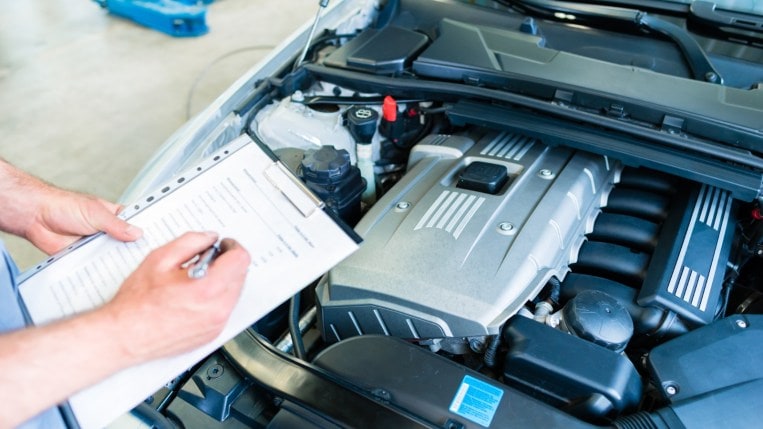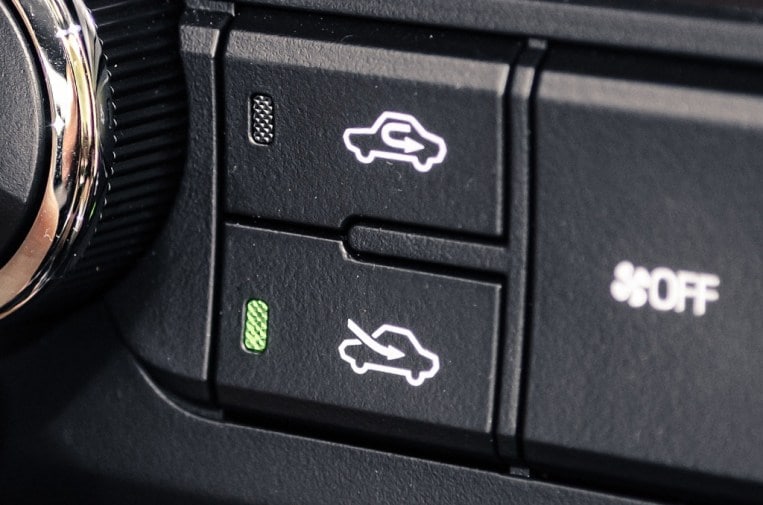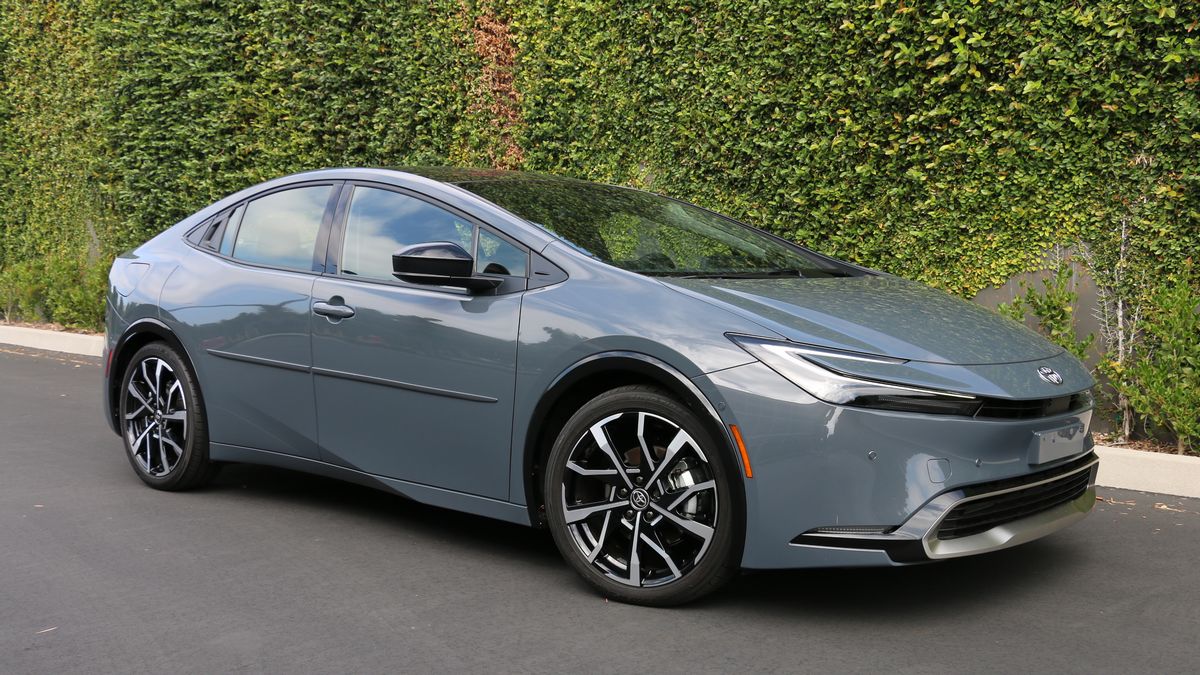As hot summer weather approaches, your car’s interior needs lots of cool air to get you and your crew around town comfortably. Too often, we take car air conditioning for granted. But having cold air in hot weather is not just another feature. It’s a necessity.
So what can we do to encourage the health of our rides’ climate control before car AC repair is needed? How can we help our car air conditioner operate better?
To find out, we’ve asked Kelley Blue Book’s in-house service and maintenance expert, Gary Hardesty, an A.S.E. certified master technician. His advice can help us keep cool all year long, especially in summer.
Keep reading to learn about common car air conditioning issues, helpful usage tips, and information about your climate control upkeep.
- Watch High Engine Temperatures on Steep Grades
- Keep Ducts Under the Windshield Dry and Clear
- When Odors are Detected, Act Quickly
- Read the Air Conditioning Section of Owner’s Manual
- Add Air Conditioning Checkpoints Maintenance Schedule
- Change the AC Filter When Needed
- Open Windows to Flush Our Hot Air
- Use the Fresh Air Vent When Possible
- Occasionally Run Defrost Mode
- Use Coldest Setting
1. Watch High Engine Temperatures on Steep Grades

To many motorists, a summer getaway means heading for the mountains. If you’re traveling in hot weather uphill on a steep grade and your car is loaded with people and gear, keep an eye on the engine temperature. Running the air conditioner amplifies stress on your engine, which can contribute to the engine overheating. If you see the engine temp gauge rising, Hardesty says to turn your heat on full blast for a few minutes to help lower the engine temperature and temporarily lessen the burden on the car’s cooling system.
2. Keep ‘Inducts’ Under the Windshield Dry and Clear
Our expert says that water, dirt, and leaves at the base of the windshield reduce operating efficiency and could contribute to mold in the climate control system. The area where the hood and windshield meet is an optimum collection point for debris like pine needles and windblown leaves. Unfortunately, the air conditioning intake is in that area, making it a bad place for old leaves to decay. Hardesty suggests regularly removing any obstructions that restrict airflow, as well as smaller debris that could enter the air distribution box and plug the water drains.
3. When Odors are Detected, Act Quickly

Strange smells in your car’s air vents can be signs of significant problems, but some odors may just be from the previous owner of your car who was a smoker or who allowed pet odors to accumulate. In these cases, Hardesty says that some orange peels placed on the floor of your car for a few days will help. Other options are to spray an odor neutralizer like Ozium into the vents or change the air conditioning filter (skip ahead to tip No. 6 for more details).
But there are some odors to watch out for that might suggest a more significant issue:
- Musty or Mildew Odor
A musty smell could mean mold entered and remained undrained in the evaporator inside your cooling system. One such way to deal with this: You can run your heater on high for a little while to dry out the evaporator/heating core.
- Sweet Smell
A sweet smell can mean an antifreeze leak. A professional mechanic can run a leak test to confirm the issue and present service options.
- Gas Odor
When you smell gas coming from your AC unit, it could indicate a gas leak, which is hazardous. However, it could also mean your gas cap is not secure or is faulty. Either way, get the issue resolved quickly.
4. Read the Air Condition Section of Owner’s Manual
Your owner’s manual is full of recommendations and requirements for operating the vehicle, including its climate control and engine cooling systems. Refer to its guidelines for antifreeze coolant to give proper corrosion protection and help prevent overheating. In case your summer travel plans don’t include a road trip, that book in your glovebox also contains information on maintaining the air conditioning system when the vehicle is unused for extended periods.
5. Add Air Conditioning Checkpoints to Maintenance Schedule

Always follow the manufacturer’s recommended maintenance schedule, which includes checking system performance to determine if car air conditioning recharge is needed. Routine inspection may detect potential problems before they become troublesome. Staying on top of AC maintenance contributes to maintaining your fuel economy while keeping the car’s interior comfortable for you and your passengers. At a minimum, have the system checked at the start of each warm season. The service should include checking the drive belt tension, cleaning the condenser fins, and a performance test.
6. Change the AC Filter When Needed
Changing the cabin air filter is an essential part of car air conditioning maintenance. A typical replacement interval is 30,000 miles, but drivers (or passengers) with airborne allergen sensitivities might get filters more frequently to help prevent dust and pollen from circulating inside the car. Clean cabin filters also allow for stronger airflow and can reduce unpleasant odors. Even car owners with minimal DIY skills can save money and replace the filter by following the instructions in the owner’s manual.
7. Open Windows and Start Driving, Then Turn on Your Air
Don’t expect the air conditioning to instantly cool the cabin during summer weather when the vehicle interior is blistering hot from sitting in the sun all day. You can give a head-start by opening your car’s windows to flush out hot air when you start the car and turn the blower on high. After a minute or so, close the windows and adjust the AC controls as needed to achieve comfort.
8. Use the Fresh Air Vent When Possible

Choosing between recirculating mode and outside air mode is perplexing to some people. Follow this straightforward advice: Use recirculation when outside conditions (smoke, dust, odors, or high humidity) are present. Otherwise, select outside air. Recirculation mode can make the inside air stuffy, and window fogging may occur. Extended use of this mode is not recommended. Instead, use the outside air mode whenever possible.
9. Occasionally Run in Defrost Mode
According to our expert, the defrost mode in your car does more than take the frost off your windows. It prevents mildew and clears up moisture inside the AC unit. Doing this once a week for 5 to 10 minutes can help you avoid mold, mildew, or other unpleasant odors in your car.
10. Use Coldest Setting and Adjust the Fan
Most experts agree that choosing the lowest temperature of your air conditioner is more efficient for the car’s cooling system and saves fuel. Why? Hardesty says that most cooling systems only cool the cabin by 30 degrees and then stop. If you reach that point, then set the temp higher, you also activate the heater. This dual effort causes stress on the system and uses more fuel. Instead, set the AC fan to low and rotate the vents away from you.
Common AC Issues
As with many other systems in your car, climate control weakens with wear and tear and leads to car air conditioner repair. Keep an eye out for telltale signs of common and costly issues, such as:
- Refrigerant leaks
- Air conditioner not blowing cold
- Defective cooling fans
- Condenser and compressor malfunctions
- Mildew in the vents
For your car’s heating and air conditioning, service and repair can range from $300 to $2,000, depending on what needs work, so it’s something to watch and maintain. Use the Kelley Blue Book Service Advisor tool to get an estimate for AC repair before making an appointment with your repair shop.
Read Related Articles:
Editor’s Note: This article has been updated since its original publication. Joni Finkle contributed to this report.





